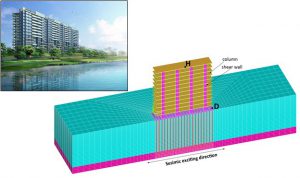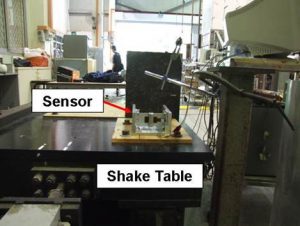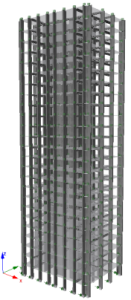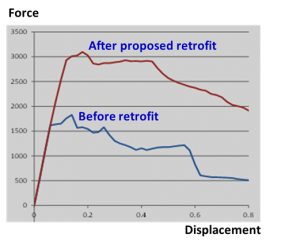-
-
- Bridging Scales from Below: The Role of Heterogeneities in the Global Water and Carbon Budgets
- Increasing Occurrences of Cyanobacterial Blooms Driven by Climate Change Factors
- Carbon Capture and Utilization
- Integrated Coastal-Inland Flood Model for Climate Change
- Pathways for Sustainable and Climate-Resilient Planning of Water-Energy-Food Security Nexus
-
- Air Quality and Health: A Paradigm Shift
- Surface Water Quality and Emerging Contaminants
- Microbial detoxification of persistent organohalide pollutants (POPs)
- Nutrients Removal in Waterbodies via Sustainable Pathways
- Centre for Water Research (CWR) researchers join their forces with U of T researchers for microplastics pollution detection and control in water and wastewater
- Dealing with Hard-To-Treat Industrial Wastewater
- Valorization of Bioresources – Towards a Circular Economy
-
- Intelligent Traffic Diffusion Plan Generation, Effective Assessment and Dissemination Strategies
- Transforming Waste into Resources for Infrastructural Development
- Look-Ahead Integrated Geophysical Investigation System (IGIS) for Singapore Tunnels
- Next-Generation Airport Pavements with Full-Scale Instrumented Testing
-
- Centre for Advanced Materials and Structures
- Centre for Hazards Research
- Centre for Resilient Underground Infrastructure and Engineering (CRUISE)
- Centre for Transportation Research
- Centre for Water Research
- Centre for Resource Circularity and Resilience (CR)2
- Centre for Offshore Research and Engineering (CORE)
- Centre for Environmental Resilience
- Safety & Health Committee
- Completed Research Projects
- Research Brief
- Achievements (in the media)
Centre for Hazards Research (CHR)

Analysis of a tall building with deep foundation subjected to far-field seismic excitation.

A tremor sensor developed for low seismic regions and tested on shake table.


Seismic fragility analysis of tall building.
Mission
- Against the backdrop of 2004 Aceh earthquake (with tsunamis) and several subsequent tremors felt in Singapore, the Centre for Hazards Research (CHR) was set up in November 2007 to study the impact and mitigation of hazards of relevance to Singapore and the region.
- The original objectives were focused on effects of Sumatra earthquakes on Singapore. The main deliverables included collaboration with HDB and promotion of awareness and preparedness on earthquake risks in Singapore.
- Arising from several floods in Singapore, the CHR expanded into research on effects of climate change on flood in collaboration with Tropical Marine Science Institute. The deliverables included regional climate model data derived at high resolutions (25 km), mainly rainfall and surface temperature at daily temporal resolutions.
Members
- Dr Chew Soon Hoe
- Associate Professor Darren Chian Siau Chen
- Associate Professor Goh Siang Huat
- Prof Koh Chan Ghee (Director)
- Prof Lee Fook Hou
- Honorary Adjunct Prof Phoon Kok Kwang
- Prof Quek Ser Tong
- Prof Tan Kiang Hwee
Facilities
- A 1.5m x 1m single-axis shake table for 0.1-100Hz frequency and 5 cm stoke, capable of simulating earthquake excitation for small-scale model tests.
- A 2-DOF rotational simulator capable of generating concurrently pitch and roll excitations to study, for example, sloshing in storage tanking.
- A strong floor area of 230 m2 complete with hold down anchors and rails at 1m intervals and a reaction wall measuring 6m high, 6m wide and thickness of 1.5m. These facilities enable large-scale testing of structural members and components.
- State-of-the-art multi-axis actuator system with 7 servo-hydraulic dynamic actuators of capacities l000 kN, 650 kN and 500 kN that can be configured to operate synchronously or individually using digital controls, e.g. for pseudo-dynamic tests.
- Two universal testing machines of capacity 500kN and 300kN for static or cyclic tensile and compressive loading on material samples.
- A parallel computing cluster support the computationally intensive research in CHR such as 3D finite element modelling of dynamic soil-structure interaction.
- High-end workstations for running high resolution regional climate models
Recent Projects
- Two HDB-funded projects were seismic studies for Singapore were conducted: (a) Tremor monitoring and assessment of buildings and (b) Seismic performance evaluation of new buildings, including soil-structure interaction and its effects on foundation elements.
- A patent on vibration sensor derived from a HDB-funded project on tremor monitoring was approved in USA in 2015. An instrumentation company (Geoscan Technology Pte Ltd) took up the licensing, paid for patent cost, and funded a research project ($247K) to develop the sensor for commercialisation: “Integrated Monitoring of Multi-range Vibration Signals with Energy Harvesting Capability”.
- In a study on “Seismic Risk of Residential Buildings in Singapore”, seismic performance evaluation has been carried out for high-rise buildings by developing fragility curves. Various types of soil conditions in Singapore have been considered. In particular, the probabilities of failure in terms of “life safety” (stipulated for major earthquakes) and “collapse prevention” (for catastrophic earthquakes) have been obtained by state-of-the-art dynamic methods. Structural robustness of buildings has also been studied by progressive collapse analysis to investigate the cascading effect of failure of key structural member caused by extreme events such as earthquakes.
- Two research projects funded by MOE have shown that the ground does not necessarily undergo full liquefaction when subject to strong earthquake shaking but instead retains some shear strength capable of supporting vital lifeline infrastructures due to the soils inherent dilation. Innovative remediation techniques with the use of permeable winged-piles have shown to be extremely useful in reducing uplift failure of buoyant lifelines such as electricity, gas and water network systems. This would reduce vulnerability to fires due to gas pipeline breakages.
- A study was conducted on the effects of far-field earthquakes, such as those arising from the Sumatran subduction and strike-slip faults, on deep building foundations constructed in regional soft soils. The study, which involved both experimental testing and numerical analyses, yielded valuable insights into soft clay amplification response and its influence on the performance of the pile foundations. The research has focused on the effect of such amplified ground motions on deep pile foundations in soft clays, such as those supporting tall HDB buildings. The results from both the small-scale centrifuge modelling and 3D numerical simulations have provided valuable insights and understanding of seismic foundation response in soft clays.
- Arising from a related research on modelling of wave impact problems, tsunami waves on seawalls and coastal structures were numerically studied. The proposed particle method has been shown to perform better than some established particle methods, particularly in terms of accurate computation of pressure which is essential for determining the impact force of large and violent waves on structures.
- The regional climate model PRECIS, developed by the Hadley Centre, UK Met Office, is used for climate simulations over Southeast Asia under current and future climates at a resolution of about 25 km focusing mainly on key climate variables, rainfall and surface temperature, at daily scale temporal resolution. The results are used as inputs to impact models (such as hydrology and crop) to study floods/droughts and crop yields under future climate changes.
Events
- The First International Conference on Climate Change and Food Security in Asia was organized by TMSI and Asia Risk Centre on 5 June 2015, in which CHR was a supporting partner.

